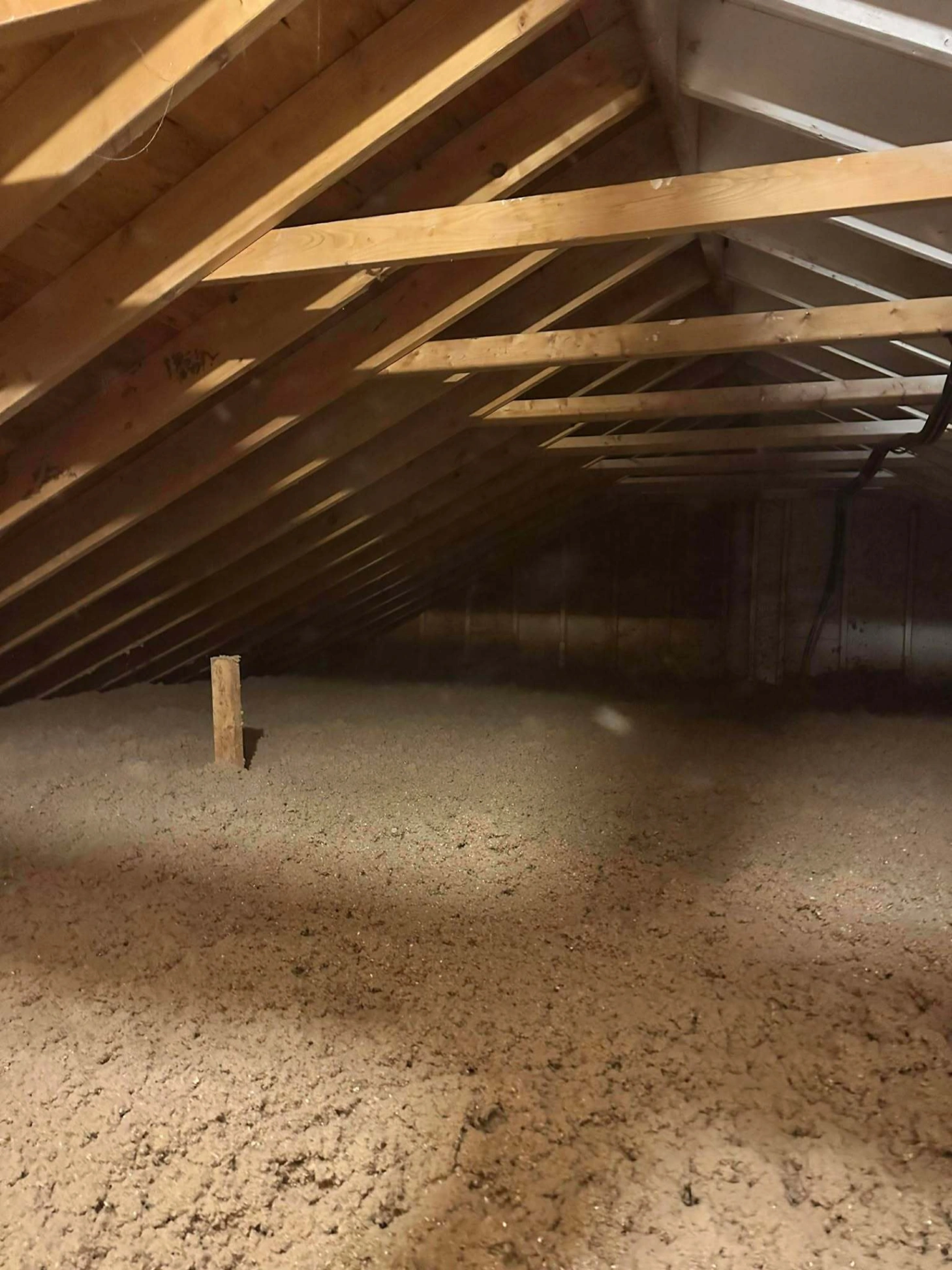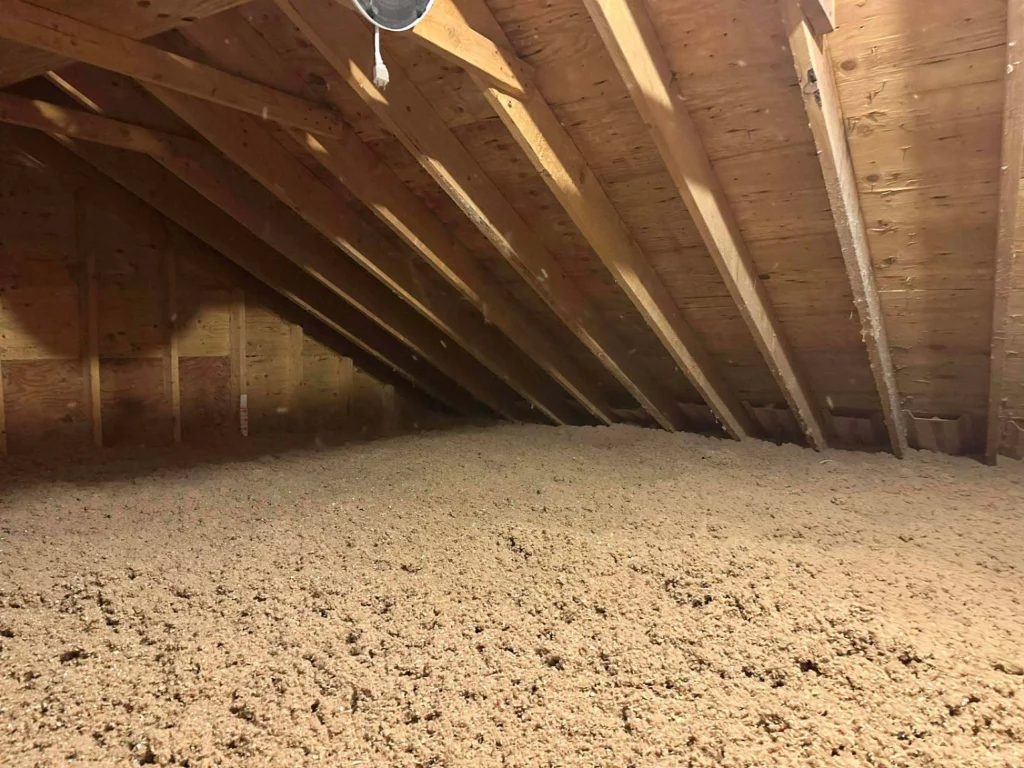
Blown-in insulation in Shrewsbury, MA directly combats humidity properties by creating a tight, comprehensive air barrier that traditional insulation often cannot match. This seamless layer is key to stopping moisture migration. In humid summers, it prevents warm, moist outdoor air from infiltrating the building and condensing on cool, air-conditioned surfaces. During cold winters, it stops warm, damp indoor air from reaching cold attic sheathing or exterior walls, which is a primary cause of condensation and potential mold growth.
By filling every small crack and cavity in walls and attics, blown-in insulation drastically reduces air leakage, the main vehicle for moisture transport. This guide details the mechanics behind how this insulation method works, its material advantages, and what to consider for keeping a home dry and comfortable year-round. Decades of field experience have shown a direct link between the quality of the thermal envelope and a home’s ability to manage indoor humidity effectively.
A building’s defense against the elements is often called its “building envelope,” which includes the walls, roof, foundation, windows, and doors. Any unintended gaps or cracks in this envelope lead to air leakage. According to the U.S. Department of Energy, these leaks can account for significant energy loss and are a primary pathway for moisture to enter a home.
When air moves, it carries moisture with it in the form of water vapor. The trouble starts when this moisture-laden air hits a surface that is at or below its “dew point” temperature. This is the point where the water vapor condenses back into liquid water. In a typical Shrewsbury home, this happens frequently:
Blown-in insulation tackles this problem at the source by effectively blocking the air movement that transports the moisture.
Unlike pre-cut batts that can leave gaps around plumbing, wiring, and framing, blown-in insulation installation using a specialized hose. This process allows the material, either cellulose or fiberglass, to flow into and completely fill irregular spaces. It creates a custom-fit, monolithic layer of insulation that conforms perfectly to the structure.
This method eliminates the seams and gaps inherent with batt insulation, forming a much more effective air barrier. The result is a significant reduction in both air infiltration (uncontrolled air leaking in) and exfiltration (uncontrolled air leaking out), which directly stops the associated moisture transport.
The effectiveness of insulation in managing air and moisture depends heavily on its form and fit. This table compares how blown-in products stack up against traditional fiberglass batts in key areas related to air sealing.
| Feature | Blown-In Insulation (Cellulose/Fiberglass) | Standard Fiberglass Batts |
|---|---|---|
| Sealing Obstructions | Excellent. Flows around pipes, wires, and electrical boxes, leaving no gaps. | Poor. Must be hand-cut, often resulting in gaps and compression. |
| Conformity to Cavity | Perfect. Fills the entire cavity, regardless of non-standard joist spacing. | Fair. Works well in standard cavities but struggles with irregular shapes. |
| Gap Prevention | High. Creates a seamless, joint-free layer that prevents air channels. | Low. Seams between batts and gaps at edges create pathways for air. |
| Overall Air Leakage | Minimal. The dense, complete fill drastically reduces airflow. | Moderate. Gaps and seams permit a notable amount of air movement. |
Beyond creating an air barrier, the materials used for blown-in insulation have specific properties that help manage ambient water vapor. The two primary materials, cellulose and fiberglass, handle moisture differently.
Cellulose insulation, made from recycled paper treated with fire retardants, is hygroscopic. This means it has the ability to absorb and release moisture from the surrounding air. A report from GreenBuildingAdvisor explains that this buffering capacity allows cellulose to manage normal levels of humidity without compromising its thermal performance or becoming saturated. It can hold moisture and then release it as conditions dry out, preventing liquid water from collecting on structural surfaces.
Blown-in fiberglass consists of fine glass fibers that are inherently resistant to moisture. Fiberglass does not absorb water, which is a significant advantage. If it does get damp from a leak or severe condensation, it will dry out without losing its R-value once the moisture source is resolved. Because it doesn’t hold water, it won’t act like a sponge against wooden joists or drywall, reducing the risk of rot and mold.
Bonus Tip: Proper ventilation is a critical partner to insulation. No matter which material is used, ensuring your attic has functional soffit and ridge vents allows air to circulate and carry away any moisture that might accumulate, keeping the entire system dry.

Before installing new insulation to combat humidity, it’s important to assess the property’s current condition. A few factors will determine the best course of action.
Look in the attic or crawlspace. Is the existing insulation compressed, stained, or sparse? Over time, insulation can settle or suffer from moisture damage, losing its effectiveness. If you see dark stains on the insulation or the surrounding wood, it’s a clear sign of past or present moisture problems that need to be addressed.
The most significant gains in humidity control come from air sealing. Before adding insulation, key leakage points should be sealed with caulk, foam, or other appropriate materials. Common problem areas include:
A poorly ventilated attic can trap hot, moist air, defeating the purpose of good insulation. Check that soffit vents at the eaves are not blocked by old insulation or debris. Ensure there is a ridge vent at the peak of the roof to allow this air to escape. The combination of insulation, air sealing, and ventilation creates a system that keeps a home dry and efficient. The Environmental Protection Agency emphasizes that controlling moisture is the key to controlling mold, with a recommendation to keep indoor humidity between 30 and 50 percent.
Ultimately, blown-in insulation’s greatest strength against humidity lies in its ability to create a nearly seamless air barrier. Stopping uncontrolled air movement stops the moisture that comes with it, preventing the condensation that can damage a home’s structure and air quality. Before making any changes, homeowners should evaluate their property’s specific air leakage points, ventilation status, and existing insulation levels to develop a complete solution.
A thorough inspection is the best way to understand the unique air and moisture movement dynamics in your property. For a detailed evaluation of your home’s insulation in Shrewsbury, MA and ventilation needs, contact Lamothe Spray Foam Insulation. You can reach the team by phone at (508) 847-0119 or by email at [email protected] to discuss specific concerns and potential solutions for creating a drier, more comfortable living environment.
By minimizing condensation, blown-in insulation removes the primary condition mold needs to grow: moisture. Both cellulose (treated with borates) and fiberglass (inorganic) are highly resistant to mold growth. However, it cannot prevent mold caused by a roof leak or plumbing failure.
Shrewsbury’s four-season climate, with cold, dry winters and hot, humid summers, makes air sealing a top priority. Both blown-in cellulose and fiberglass perform well here because their primary benefit is reducing air leakage, which protects the home from both winter condensation and summer humidity infiltration.
Yes, it’s often the best choice for older homes. These properties frequently have non-standard framing and decades of small renovations that create numerous cavities and voids. Blown-in insulation is one of the few methods that can effectively fill these irregular spaces to create a continuous thermal barrier.
If blown-in fiberglass gets wet, it will dry out with adequate airflow and retain its insulating properties. Cellulose can absorb a significant amount of water; a minor incident will likely dry out, but a saturated section may need to be removed and replaced to prevent compaction and ensure its R-value is restored.